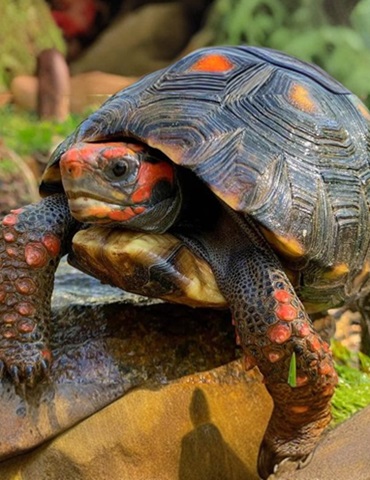Q: I have a pair of gold dust day geckos (Phelsuma laticauda) that just laid three eggs. Once the eggs hatch and the geckos mature sexually, I would like to try breeding one of them with a lined day gecko (Phelsuma lineata) that I also have. Will this work? If it does, will the coloration favor one of the parents or be a mixture of the two?
James Canepa
Portland, Oregon
A: Hybridization between reptile species is strongly discouraged. Creating hybrids from gold dust and lined day geckos is not recommended due to multiple risks and ethical concerns.
Hybrids often lack the beauty of their parent species, may be maladapted, and frequently exhibit reproductive difficulties. They can also enter the pet trade and contaminate pure breeding lines of the original species.
The appearance of hybrids is unpredictable. Natural lizard hybrids are generally intermediate between parents, though one parent’s pattern may dominate.
Despite similarities in size and biology, the distinct colorations of gold dust and lined day geckos should naturally prevent mismating. Females recognize males of their own species by color, and may not be receptive to differently colored males.
Gold dust geckos lack strong dark lateral lines, have red “fingerprints” on the back and bright yellow throats. Lined day geckos have dark lateral stripes, pale throats, and more subdued back colors.
Even if matings are forced, few eggs are likely to be viable. Gold dust day geckos lay nonadhesive eggs, while lined day geckos lay slightly adhesive eggs in crevices. Genetic incompatibilities in shell development and chromosome structure may prevent successful fertilization.
Any resulting offspring would likely be sterile or have reduced viability, as is common with most hybrids.
Photo by Zig Leszczynski
A lined day gecko (Top) and a gold dust day gecko (Bottom) potentially could breed, but such a pairing should be discouraged.
Photo by Zig Leszczynski
Hybrid offspring are often maladapted, can have reproductive problems and tend to taint pure breeding lines.
Nature tends to fight against hybridization in most groups of animals. Lizards with distinctive color patterns are certainly not exceptions to this rule. It is strongly advised: Don’t do it!



